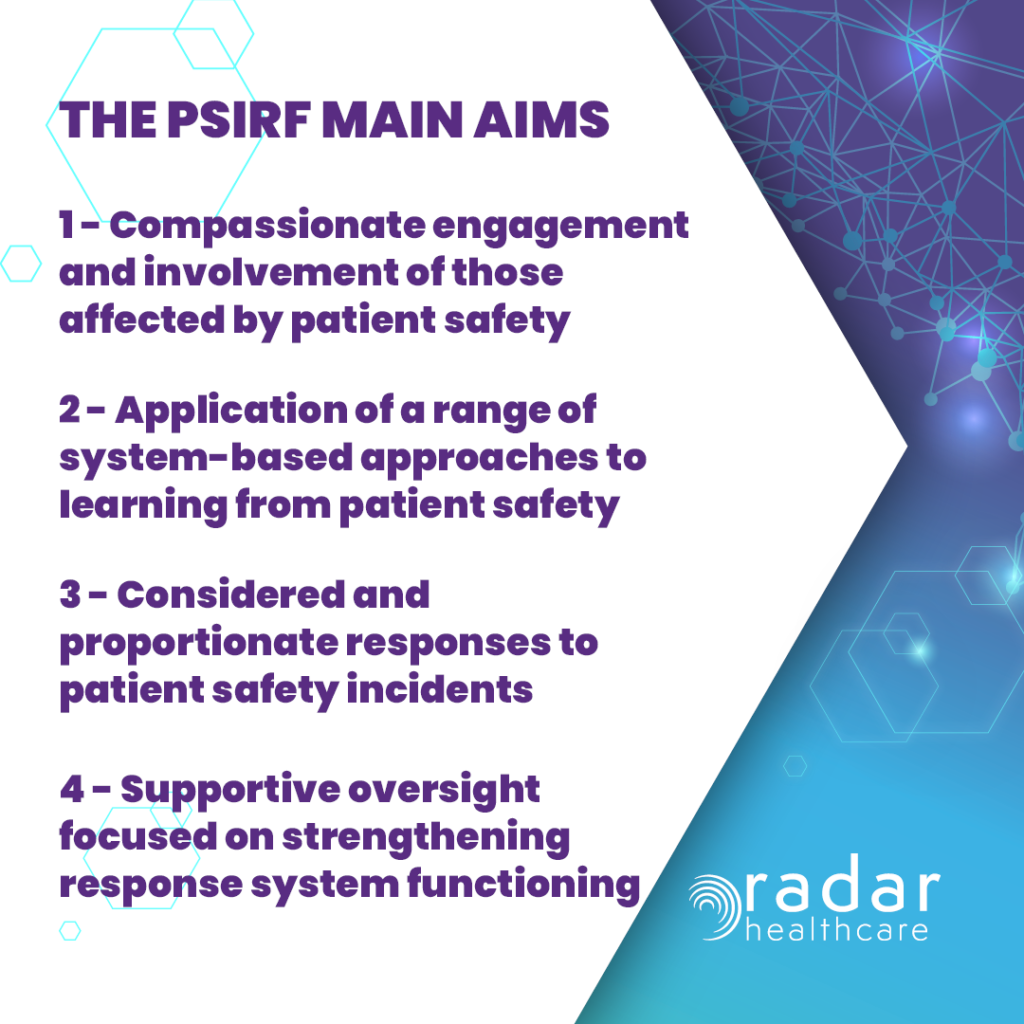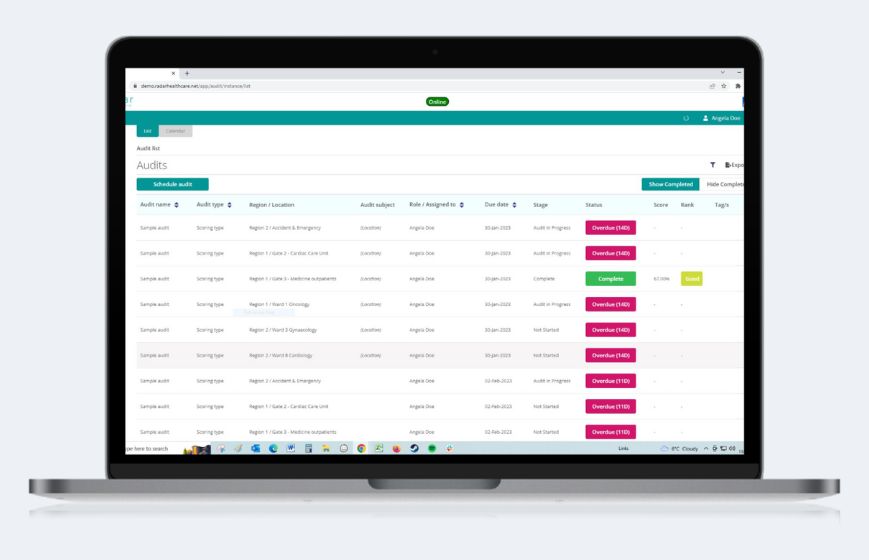What are the 4 main aims of PSIRF?
25 July 2022
Tags:
The Patient Safety Incident Response Framework (PSIRF) is replacing the Serious Incident Framework (SIF) and organisations are expected to transition within the next 12 months, by autumn 2023. But what are the 4 main aims of PSIRF?
The 4 main aims of PSIRF


1 – Compassionate engagement and involvement of those affected by patient safety incidents
Learning from a patient safety incident can only happen if there are processes put in place to support the compassionate engagement and involvement of those affected, including patients, their families and staff.
This means creating safe spaces and opportunities for discussion, understanding and for asking questions that all parties may have in relation to the incident.
When a patient safety incident investigation (PSII) occurs, patients, their families and staff should be engaged in a meaningful way – but only if they want to.
Organisations and Trusts must have policies and guidance on hand to assist in these new processes, and special considerations must be allowed for those affected.
2 – Application of a range of system-based approaches to learning from patient safety incidents
The PSIRF will be encouraging the use of system-based approaches to patient safety incidents, instead of more linear methods of identification.
Organisations will be asked to use the national learning response tools and guides to understand and uncover contributing factors to a patient safety incident, or incidents, to drive improvements.
Those who lead the patient safety incident responses and those involved in the learning and improvement from these responses will need specific knowledge and experience, details in official standards.
3 – Considered and proportionate responses to patient safety incidents
The goal of the PSIRF is to maximise improvement, not to reach a particular threshold of patient safety incident responses. Each organisation has a finite number of resources, and they must expend those resources in a way that benefits them and their outreach.
Some incidents like Never Events and deaths require a PSII to understand the actions behind that incident and where improvements and learnings can be made. Similarly, certain incidents need to follow specific reporting and reviewing processes, which are detailed in the Guide.
The PSIRF aims to put accountability and responsibility back into the hands of the organisations. If an organisation or Trust and its ICB are satisfied with the response to an incident, it will be acceptable to forego further action.
4 – Supportive oversight focused on strengthening response system functioning and improvement
Organisations must work collaboratively, understanding their shared aims of the PSIRF. An effective governance structure is expected, with ICBs required to facilitate that collaboration at both place and system levels.
The PSIRF also expects ICBs and other regulators to understand and evaluate the effectiveness of NHS providers’ response processes. The leaders of the providers are accountable for the quality of learning responses, not the providers themselves.
However, providers should be open with the information relating to patient safety incidents and incident responses, as well as support the continuous development of the framework. More information about this is available in ‘Oversight roles and responsibilities specification’.
Patient Safety Incident Investigation (PSII)
As part of the PSIRF, the PSIIs are carried out to improve systems. They involve investigating patient safety incidents to pinpoint both how and why they happen.
Data collection and analysis play a large part to help identify underlying system-based causes. Once identified, improvement plans are put in place to address these system issues and therefore help improve patient safety in the National Health Service.
The NHS provides tools and methods for PSII including incident mapping worksheets and contributing factors classification.
Hear from subject matter experts on PSIRF
In an episode of our podcast, our Chief Product Officer Mark Fewster had an insightful discussion with Helen Hughes, the Chief Executive of Patient Safety Learning. They delved into the details of NHS England’s Patient Safety Incident Response Framework. Tune in to discover how this framework is set to foster an open and just culture within the healthcare system. Mark and Helen also shed light on what we can anticipate during and after the transition, emphasising the crucial role of the implementation process in ensuring the success of PSIRF.
How technology plays a part
Having the right systems in place is a huge part of improving patient safety because data and analytics from previous incidents is the key to learning how to avoid these in future.
Radar Healthcare is a risk, quality and compliance system built with patient safety in mind. LFPSE compliant and packed with AI, the software helps you accurately log incidents, put in place action and improvement plans, and report on improvements made. Book a demo below.
See how Radar Healthcare can help you get PSIRF ready










